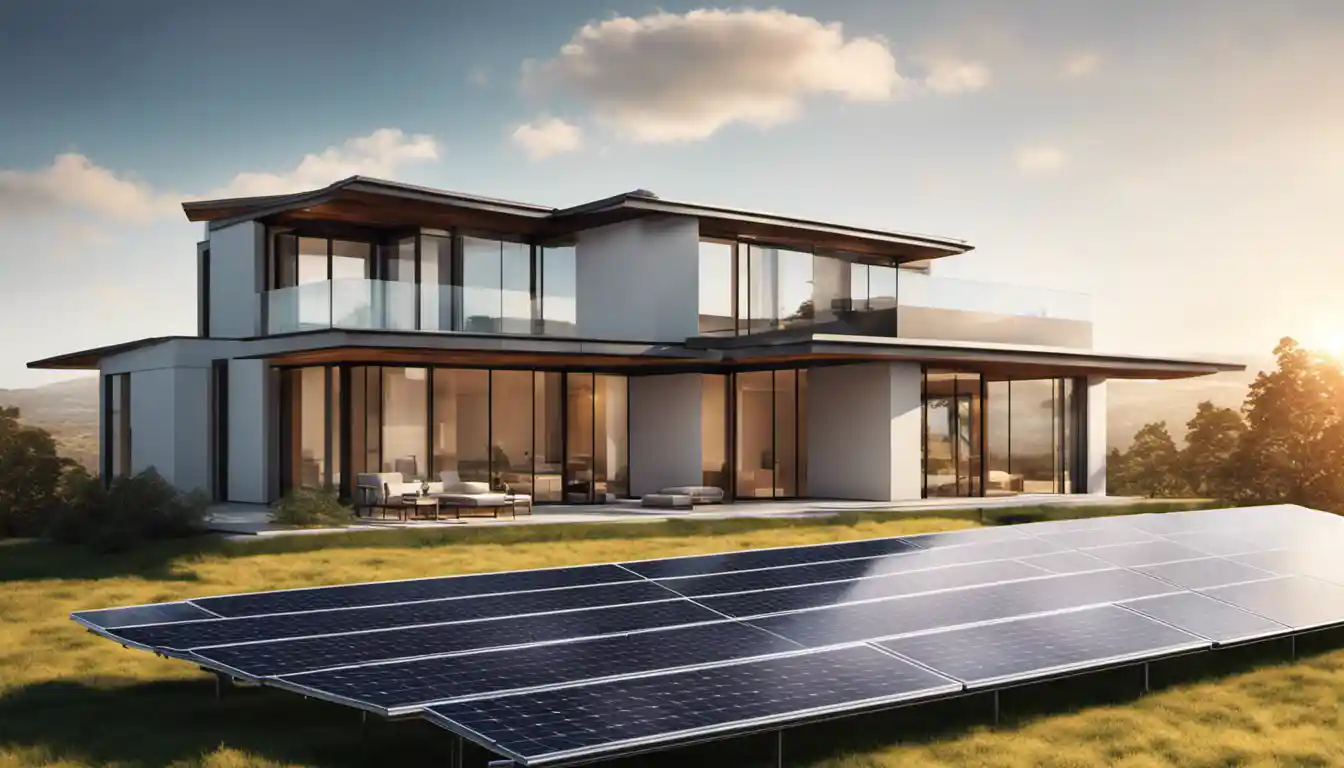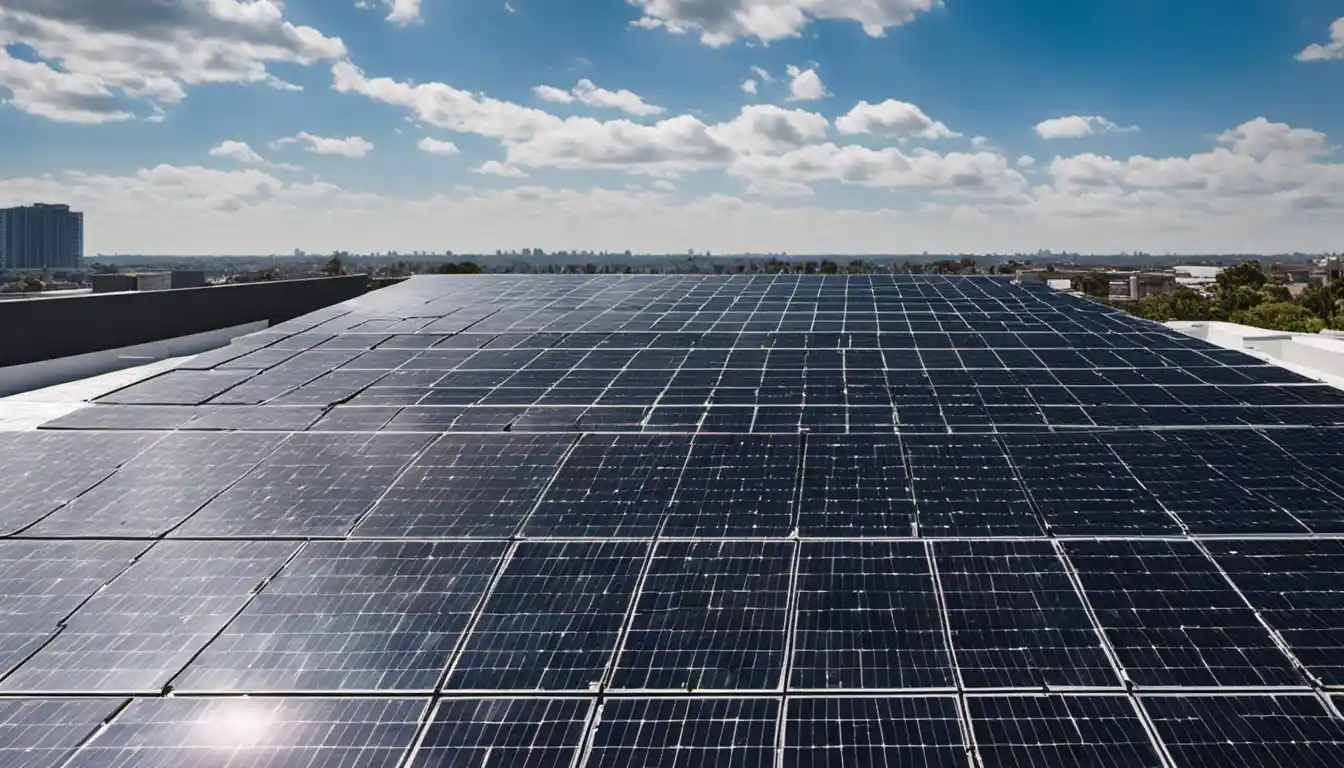Grid Tied Solar System: Understanding the Basics
A grid-tied solar system is a solar power generation system that is connected to the utility grid. It allows you to feed excess energy back into the grid when your system produces more than you use and draw from the grid when you need more power than your system can produce.
What is a Grid-Tied Solar System?
At its most elementary level, a grid-tied solar system is a setup consisting of solar panels, a power inverter (converts DC power from the panels to AC power for your home), and a power meter. The solar panels capture sunlight, convert it to electricity, and then feed it to the inverter. The inverter then modifies the generated power to match the grid’s frequency and phase, allowing the energy to be utilized by your home appliances. When your system generates more energy than you consume, the excess electricity feeds back into the grid, leading to a significant reduction in your utility bills. Talking about reduction of bills–So, “what is on grid system?” It’s another name for the grid-tied system where you’re ‘on the grid’ feeding back excess energy and taking in when your system falls short.
See also: How to Connect Solar Panels to the Grid: A Step-by-Step Guide
How does a Grid-Tied Solar System Work?
This extraction and infusion process happens seamlessly and at an almost instantaneous rate. When the sun is shining, and your solar panels are producing electricity, you’re reducing the amount of energy you need to draw from the grid, hence saving money. As nighttime rolls in, or on cloudy days when your system isn’t producing much (or any) energy, you pull electricity from the grid to keep things running smoothly. Therefore, this “grid tie solar system explained” is more like a dance between the solar panels, inverter, home, and grid.
See also: Grid Tied Solar System Components: An In-depth Guide for a Sustainable Future
Comparison with Other Solar Systems
See also: Grid Tie Solar System Cost: Comprehensive Guide to Understanding Your Solar Investment
How are Grid-Tied Solar Systems Similar to Other Systems?
Like off-grid and hybrid systems, grid-tied solar systems also employ solar panels to generate electricity. They also use inverters to transform the DC power produced by the panels into AC power. However, the similarities end here.
See also: How Do Solar Panels Feed Back into the Grid? A Comprehensive Guide to Solar Energy
Distinctive Features of Grid-Tied Solar Systems

The primary distinctive feature of grid-tied systems is in their relationship with the utility grid. Unlike off-grid systems that operate independently and store excess power in batteries, grid-tied systems are directly connected (“tied”) to the utility grid, feeding excess energy into the grid and drawing from it as needed.
Advantages of a Grid-Tied Solar System
1. Money-Saving Prospects with Net Metering
Because a grid-tied solar system sends extra electricity back to the utility grid, you receive credits for this exported power—a billing arrangement known as net metering. These credits reduce your monthly electricity bills, sometimes significantly.
2. Efficient Utilization of the Utility Grid
The grid acts as a giant battery for your solar system, buffering supply and demand without the need for actual battery storage. Using the grid this way means your system is always using its generated power in the most efficient way possible. You can learn more about this in our article How to Set Up a Grid-Tie Solar System.
Understanding the Drawbacks
A grid-tied system does have some drawbacks, the main one being it’s dependent on the grid. When the grid goes down, so does your solar power. You don’t want to inadvertently send power back to the grid during an outage, as it can be dangerous. Read in-depth about these issues in our post discussing the Disadvantages of Grid-Tied Solar Systems.
Equipments Needed for a Grid-Tied Solar System

The Role of Grid-Tie Inverter (GTI)
The GTI or Grid-Tie Inverter plays a vital role in a grid-tied solar system. A GTI, acting as the middleman between solar panels and the utility grid, converts the direct current (DC) from your panels into alternating current (AC) for the home and the grid.
Understanding the Functioning of Micro-Inverters
In recent years, micro-inverters have become increasingly popular in grid-tied solar systems. In this arrangement, each solar panel is equipped with its own small inverter, reducing the power loss due to variations in individual panel performance and allowing more flexible system design.
The Importance of Power Meter in a Grid-Tied Solar System
The power meter, or sometimes even a bidirectional meter, measures the power your system sends to and draws from the grid. This essential device calculates the savings that crop up on your electricity bill from your grid-tied solar system.
The Costs Associated with Grid-Tied Solar Systems
How Much Does a Grid-Tied Solar System Typically Cost?

The cost of these systems varies widely, depending largely on the system size, location, and installed solar panel prices.
Factors Affecting the Cost of a Grid-Tied Solar System
Factors like installation charges, permit costs, and equipment upgrades (like a more efficient inverter or sturdy mounting racks) play a critical role in determining the overall cost of your system.
Frequently Asked Questions (FAQs)
How is a Grid-Tied Solar System Different from a Hybrid Solar System?
While they might seem similar, significant differences exist between these two. A hybrid solar system operates both “on” and “off” the grid. It combines the best of both worlds by connecting to the grid (like a grid-tied system) but also uses a battery bank for storage (like an off-grid system).
Are there any Specific Regulations for Installing a Grid-Tied Solar System?
Yes, the regulations vary by location. Make sure to consult with local authorities or a professional solar installer before setting up your solar system.
In conclusion, a grid-tied solar system offers a practical solution for those seeking to save on energy costs and contribute to a greener environment. Explore more about the unique Benefits of an On-Grid Solar System and make the best decision for your power requirements. Remember, it’s not only a financial investment but also a step towards sustainable living. Stay curious, and happy solar journey!



